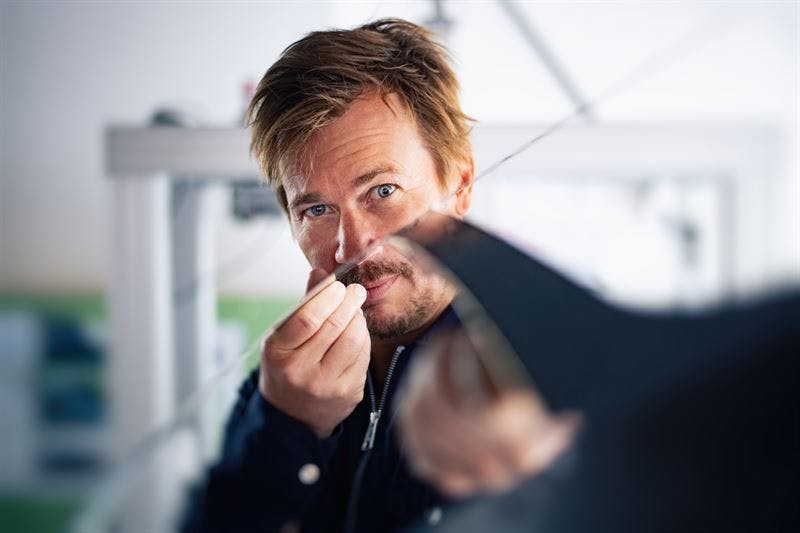Article
The Power of the Curve: Comparative Analysis of Metal Stamping and Curve Folding with Industrial Origami

In advanced manufacturing, metal stamping and curve folding are two prominent methods for shaping sheet metal. Additionally, the integration of industrial origami with curve folding presents a novel approach that combines the geometric principles of origami with advanced material engineering. This comparative analysis evaluates these methods in terms of stiffness (K) and strength (σ), highlighting the benefits and applications of combining curve folding with industrial origami.
Stiffness (K)
Metal Stamping: Metal stamping uses a press to deform sheet metal into precise shapes, and while it is highly efficient for mass production, it does not inherently enhance the stiffness of the material. The process can introduce issues such as wrinkling and thinning, which may reduce the overall stiffness of the stamped parts (Barton International, 2023).
Curve Folding with Industrial Origami: Curve folding, particularly when integrated with industrial origami techniques, significantly enhances stiffness. Curve folding itself increases stiffness by 1.5 to 3 times through geometric stiffening. Industrial origami takes this further by utilizing complex fold patterns that distribute forces more evenly, thereby minimizing localized deformation and enhancing rigidity. This method allows for the creation of lightweight yet stiff structures, ideal for aerospace and automotive applications where material efficiency and performance are critical (Deployable and Reconfigurable Structures Laboratory, 2022).
Strength (σ)
Metal Stamping: The ultimate strength of stamped parts is influenced by the material properties and the design of the die. Stress concentrations at sharp corners or complex geometries can lead to material failure under high loads. Although advanced techniques like CNC and CAD can optimize the process, the inherent limitations in load distribution remain a challenge (MDPI, 2023).
Curve Folding with Industrial Origami: Combining curve folding with industrial origami improves the strength of metal structures by 20% to 50% compared to traditional stamping methods. This enhancement is due to the optimized load distribution achieved through the fold patterns, which reduce stress concentrations and improve the material’s resistance to failure. Industrial origami leverages mathematical and geometric principles to create fold patterns that maximize strength and durability, making it suitable for high-stress applications in sectors such as construction and structural engineering (How Curved Creases Enhance Stiffness, 2023).
Comparative Advantages
Efficiency and Material Utilization: Metal stamping is efficient for large production runs and offers high precision. However, it can be material-intensive and produce significant waste. Curve folding combined with industrial origami optimizes material usage, creating complex shapes and structures with enhanced mechanical properties without additional material. This method aligns with sustainable manufacturing practices by reducing waste and improving material efficiency (Barton International, 2023).
Application and Flexibility: While metal stamping is versatile and widely used, the integration of curve folding with industrial origami offers greater flexibility in creating innovative shapes and structures. This approach is particularly beneficial for applications requiring lightweight yet strong components, such as robotics, portable structures, and advanced aerospace designs (MDPI, 2023).
Conclusion
The integration of curve folding with industrial origami provides significant improvements in stiffness and strength over traditional metal stamping. By leveraging geometric stiffening and efficient load distribution, this method offers robust, lightweight, and sustainable solutions for advanced manufacturing applications. The advantages of this combined approach underscore its potential in various high-performance and environmentally-conscious industries.
References
- Barton International. (2023). The Advantages & Disadvantages of Metal Stamping.
- Deployable and Reconfigurable Structures Laboratory. (2022). Behavior of Curved-Crease Origami Structures.
- MDPI. (2023). Recent Developments and Trends in Sheet Metal Forming.
- How Curved Creases Enhance Stiffness and Enable Shape Morphing of Thin-Sheet Structures. (2023). Available Here.